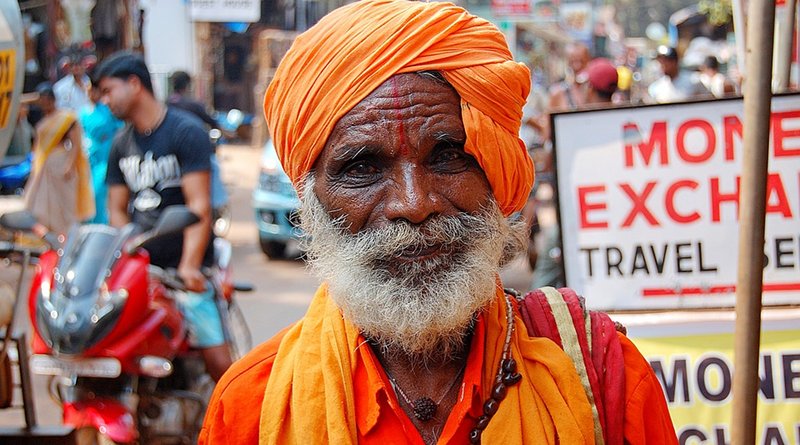Sensitizing Pakistani Hindus Migrating To India – OpEd
By Asad Ali
Pakistani Hindu pilgrims regularly embark on journeys to India to pay their respects at various holy places, symbolizing the enduring cultural and spiritual ties that transcend borders and religious differences. India, home to a significant Hindu population and numerous revered temples, holds a special place in the hearts of Pakistani Hindus.
One of the most revered destinations for Pakistani Hindu pilgrims is Varanasi, one of the oldest and holiest cities in India, situated on the banks of the Ganges River. Here, they participate in rituals, take holy dips, and offer prayers at the temples, connecting with their spiritual heritage. The birthplace of Lord Krishna in Mathura and the magnificent temples of Ayodhya, believed to be the birthplace of Lord Rama, also attract a significant number of pilgrims from Pakistan.
These pilgrimages not only provide spiritual solace but also foster people-to-people connections, promoting intercultural understanding and goodwill. The Indian government has made efforts to streamline the visa process and provide better facilities for these pilgrims, further enhancing this age-old tradition of cross-border religious harmony. It stands as a testament to the shared cultural and historical heritage of the Indian subcontinent, exemplifying the harmony that can exist even in the face of geopolitical complexities.
The Indian government has, at times, facilitated the process for Hindu pilgrims from Pakistan to forgo their Pakistani nationality and seek refuge in India. Indian government has been trying to malign Pakistan over flimsy ground in order to accomplish political objectives.
India’s stance on the treatment of Hindus in Pakistan has been a contentious issue, with accusations of maligning Pakistan over flimsy grounds. Contrary to Indian propaganda, Pakistan has been facilitating / extending all possible assistance to minorities in Pakistan. India’s assertions of religious discrimination in Pakistan have often been met with skepticism and pushback from the Pakistani government. Critics argue that India may at times exploit the plight of Hindus in Pakistan to further its own diplomatic interests and divert attention from internal issues.
Likewise, Pakistan has been taking steps to protect minority rights, such as legislating for reserved seats for non-Muslims in its parliament and addressing issues of forced conversions. Maligning Pakistan over flimsy grounds can hinder diplomatic progress and hinder the prospects for peaceful coexistence in the region.
Hindu migrants from Pakistan have been attracted to India by the Citizenship Amendment Act (CAA) introduced in 2019 during PM Modi’s government. The CAA aimed to fast-track the citizenship process for persecuted religious minorities, including Hindus, from Pakistan, Afghanistan, and Bangladesh. On the surface, it was portrayed as a humanitarian gesture to offer a safe haven for those facing religious persecution. However, critics argue that the CAA was more of a political ploy designed to gain Hindu votes and consolidate the government’s power. They contend that the law selectively excluded Muslim migrants and ignited concerns about religious discrimination. Protests erupted across India, with many citizens fearing that the law would undermine India’s secular principles and further polarize the country along religious lines.
The CAA’s implementation remains a subject of controversy and legal challenges, highlighting the complex interplay of politics, religious identity, and human rights in India. It underscores the delicate balance between providing refuge to persecuted minorities and maintaining India’s diverse and inclusive character. While the law did attract Hindu migrants from Pakistan and neighboring countries, its underlying political motivations continue to be debated. The true impact of the CAA on these migrants and on the larger sociopolitical landscape of India remains a subject of ongoing discussion and scrutiny.
It also reflecting a wider trend of Pakistani migration for better economic opportunities, the Hindu community sought stability in India due to perceived religious congruity. Deceived by the appealing propaganda of BJP, many migrants faced disillusionment upon encountering the harsh realities of poverty and discrimination in India. It is fact that India banned caste-based discrimination in 1955, but centuries-old biases against lower-caste groups, including Dalit’s still persists, making it harder for them to access education, jobs, and homes arriving with a tag of being Pakistani. This compounded their miseries as being portrayed “outcasts within outcasts”. The negative propaganda proliferated by Indians through its sponsored NGOs like Seemant Lokh Sanghathan lacks substance as in Sindh (from where most of Hindus emigrated) has religious harmony and there are huge no of influential Hindus running businesses successfully with some dealing trading rice, milling etc in monopoly and enjoying religious freedom.

